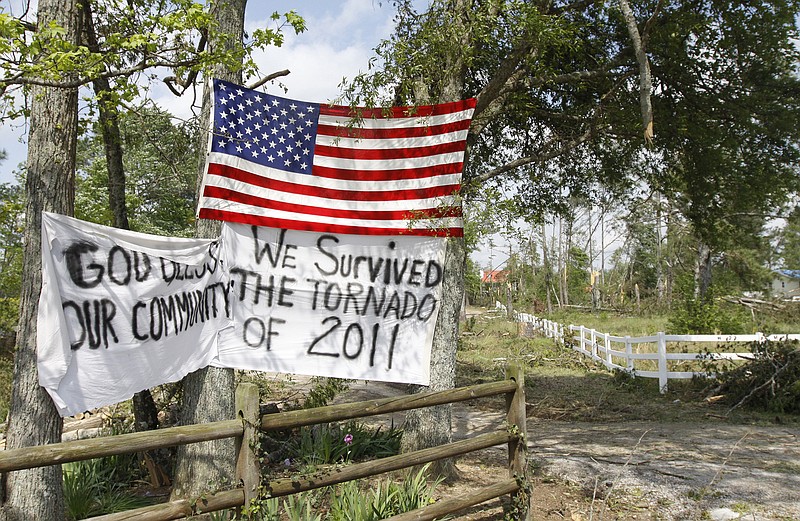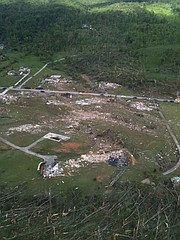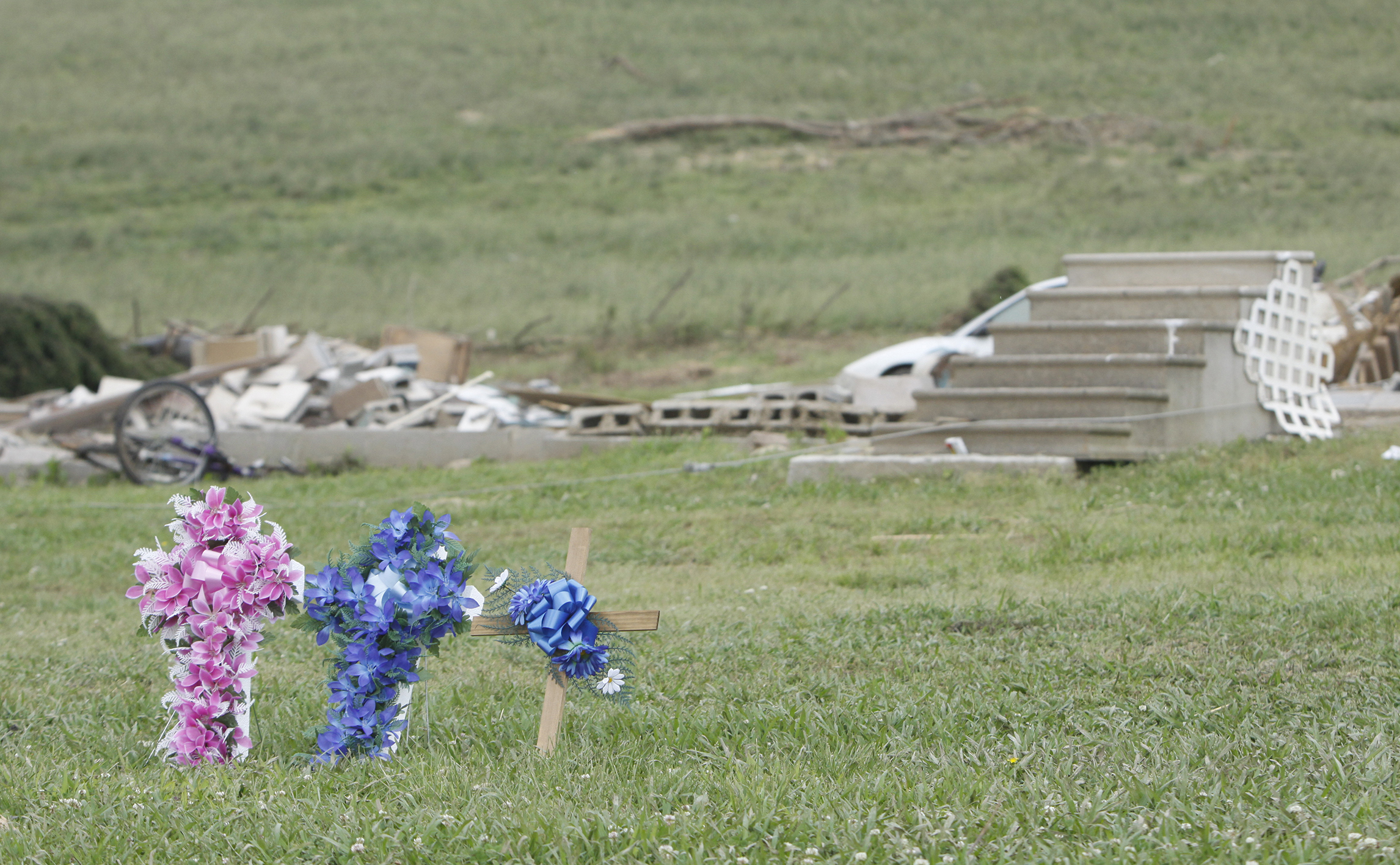Build strong
Here are some changes enforced in Moore, Okla., to beef up residential construction on the advice of structural engineering experts at the University of Oklahoma:› Roof sheathing must be attached with nails that are at least 2.5 or 3 inches long every 4 inches along roof edges› Roof framing shall be 16 inches on center.› Hurricane clips or framing anchors required on all rafter-to-wall connections.› Nails for wall sheathing must be 2.5 to 3 inches in length and used every 4 inches along edges.› Garage doors shall be rated to 135 mph wind or above.› Exterior wall studs shall be 16 inches on center.Source: City of Moore, Okla.
Shelter from the Storm
While Moore, Okla., has beefed up its building codes to make homes tornado-resistant, officials there stop short of saying the regulations will save lives.“To save a life, we always recommend that you go into a storm shelter,” said Moore’s Community Development Director Elizabeth Jones. “We are strong believers in storm shelters in Moore, Okla. In fact, we get applications for storm shelters every day.”Storm shelters also have become popular in the Chattanooga area since April 2011, when deadly storms and tornadoes tore communities apart and claimed dozens of lives.“What we’re seeing, especially in these custom homes around [Lake Gunterville], is a safe room that’s built in the house,” said Scottsboro building inspector Rick Baird. “A lot of them, it’ll be a big bathroom. It’ll have concrete walls, a concrete ceiling.”“You get to thinking about it, that’s pretty smart,” Baird said. “Because if your house blows down and you’re in the 8-foot-by-8-foot room, it’d be nice to have a bathroom.”
After Moore, Okla., got hammered by its third monster tornado in 13 years, Mayor Glenn Lewis had had enough.
He pushed to make Moore the first U.S. city to beef up its building code for tornadoes and require new homes to withstand 135 mph winds - in the same way California homes are built to ride out earthquakes and Florida homes must resist hurricanes. That came after an EF5 category tornado in 2013 killed two dozen residents in the Oklahoma City suburb, causing $2 billion in damage.
"Our mayor was very adamant that we needed to do more to protect our residents," said Moore's Community Development Director Elizabeth Jones, whose department handles building inspections and permits.
Moore's 135 mph wind-resistant building code calls for changes such as constructing houses using longer nails, sturdier garage doors and "hurricane clips" that attach the walls to the roof so it's less likely to blow off.
"It's really not that much more money," said Jones, who said the regulations add $1,000 to $1,500 to the cost of a 2,000-square-foot home.
Moore's beefed-up residential building code should reduce damage, an expert says, because while an EF5 tornado's speed exceeds 200 mph, that drops off rapidly outside a twister's direct path.
Andrew Graettinger, a civil engineer at the University of Alabama, found that during the 2011 tornadoes in Tuscaloosa, Ala., (EF4) and Joplin, Mo., (EF5) about 85 percent of the damaged homes were in areas with winds ranked at or below EF2, or 111 to 135 mph.
So, even facing those monster tornadoes, homes in Tuscaloosa and Joplin would have fared much better had they been built to withstand 135 mph winds.
"All of those homes, 85 percent of the area, could have experienced much less damage," Graettinger said.
Building codes, inspectors, lacking here
Moore's pioneering foray into tornado-safety regulations stands in stark contrast to some Chattanooga-area rural counties that were hard hit by the 2011 tornadoes.
In the unincorporated parts of some counties here, no one checks to see if houses are built to stand up to strong winds - or to meet any kind of building regulations - since the counties haven't adopted building codes, don't require building permits and don't have building inspectors.
"I wish that there was some [county building codes], but we don't have authority to do that," said Ricky Harcrow, the county commission president in northeastern Alabama's DeKalb County, where 33 people were killed and around 100 injured by the April 2011 tornadoes.
Likewise, Jackson County, DeKalb's neighbor to the north that saw eight lives claimed in April 2011, doesn't have building codes, doesn't issue building permits and doesn't employ building inspectors.
Cities in Alabama, however, do have the power to adopt building codes and employ building inspectors. Both are in place in DeKalb County's largest city, Fort Payne, and in Jackson County's largest city, Scottsboro. New homes in both cities must be built to withstand 90 mph winds.
Without inspections, 'builders cut corners'
"Insurance is cheaper in a city or a town that has an inspection department," said Fort Payne's chief building official, Stan Blevins. "They simply pay more for insurance in DeKalb County than we do in the city of Fort Payne."
Scottsboro building inspector Rick Baird said Alabama's state building code becomes the default in areas without locally adopted building codes - but that may not mean much if there are no county building inspectors.
"Not having any building code adopted, [counties] would be under the state code," Baird said. "Unfortunately, it'd be kind of like having the laws of the land - and no police."
Blevins echoed that.
"When you get outside the city limits, where there's not an inspection department, then a lot of licensed builders cut corners," Blevins said. "There's nobody there to check it."
"You've got some builders they will build [houses to code] in the county," Blevins said. "And then you've got some that, hey, if they can save $200 and $300 and build a house - the more they save, the more they can put in their pocket."
'People willing to take their chances'
Dade County in the very northwestern corner of Georgia is another rural county near Chattanooga that hasn't adopted building codes and doesn't employ building inspectors.
"We have not had any reason to," County Commission Chairman Ted Rumley said.
He pointed out that contractors who build a house in Dade County - and don't build to state code - could lose their licenses.
"That right there, in itself, that's pretty stringent," Rumley said.
"We're not a tornado-prone area," Rumley added. "Although, who knows? [It's up to] Mother Nature. But we went years and years and years before a tornado came through here."
Dade County, and the county seat, Trenton - which does have building codes and inspections - saw two deaths as a result of the April 2011 tornadoes.
While houses can be strengthened to resist damage from tornadoes, people in tornado-prone communities have to see a need for it, said David Prevatt, an associate professor of civil and coastal engineering at the University of Florida in Gainesville who's studied the aftermath of hurricanes and tornadoes, including the EF5 that devastated Moore in 2013.
"It is becoming more apparent that people living in these communities have decided tornadoes are sufficiently rare events that they are willing to take their chances," Prevatt said. "I fear that the destruction of cities is seen as a natural consequence of nature - rather than [structures being] something one may build better to minimize such damage."
Moore, Okla., adopted its high-wind building code after being hit by numerous tornadoes, Jones said, including three big ones in 13 years: an EF5 in 1999 that had 301 mph winds - the highest wind speed ever recorded on Earth - an EF3 tornado in 2003 and the EF5 in 2013.
"We have a long history of having very violent tornadoes," she said. "We fully expect another one."
The Associated Press contributed to this story.
Contact staff writer Tim Omarzu at tomarzu@timesfreepress.com or www.facebook.com/MeetsForBusiness or twitter.com/meetforbusiness or 423-757-6651.


